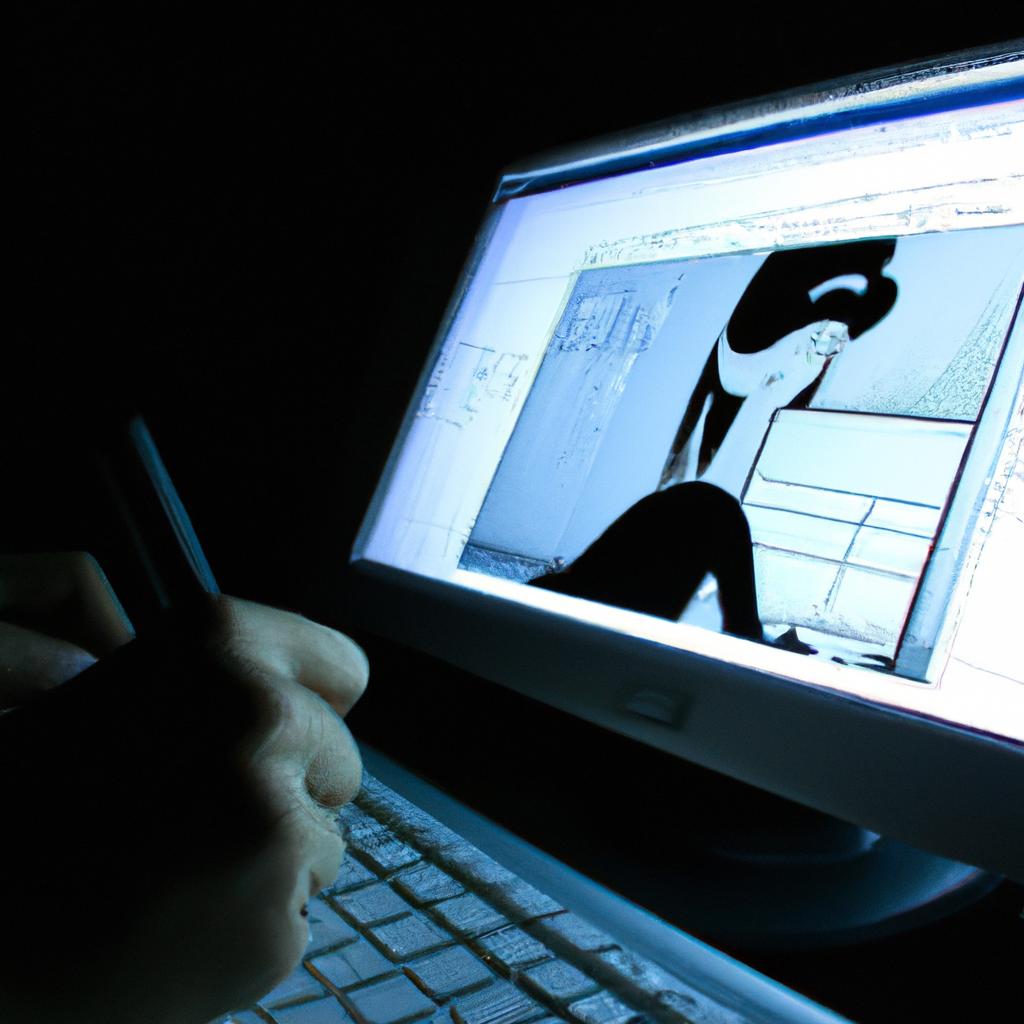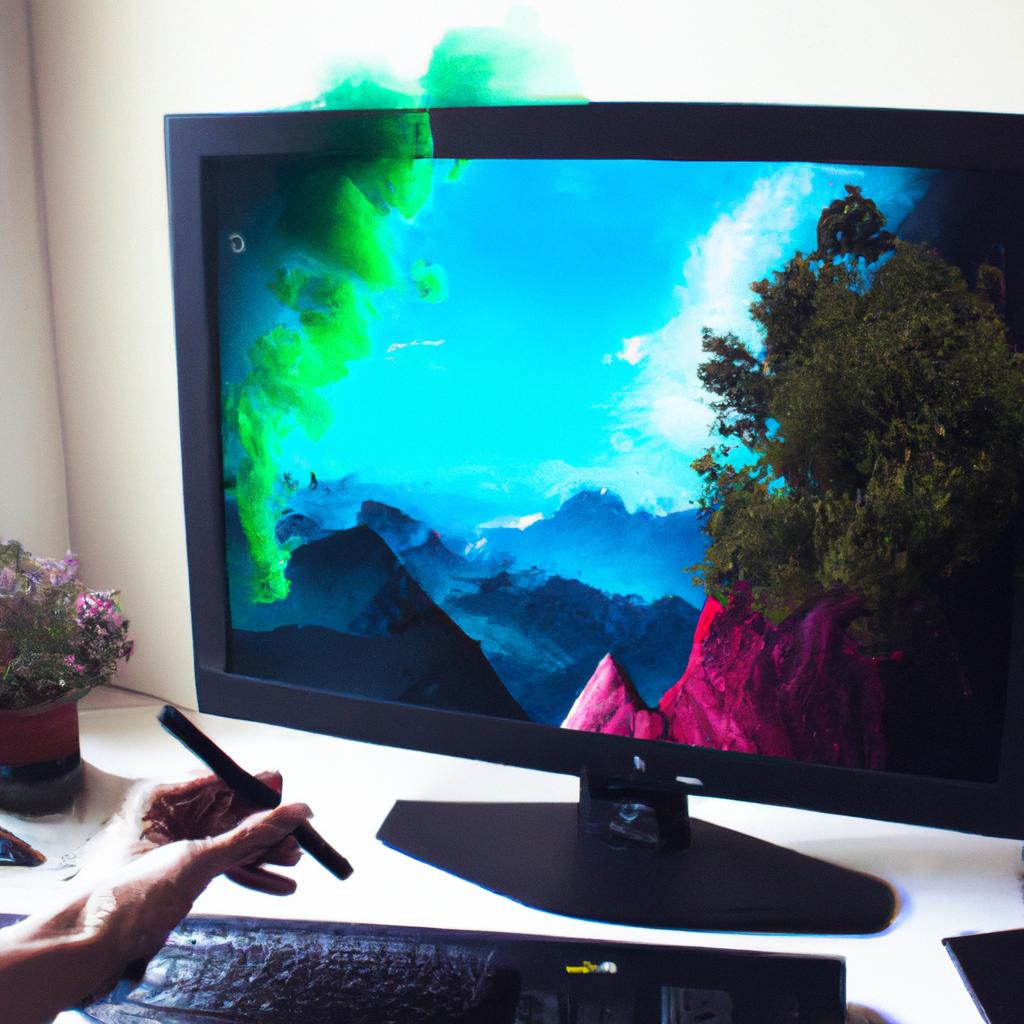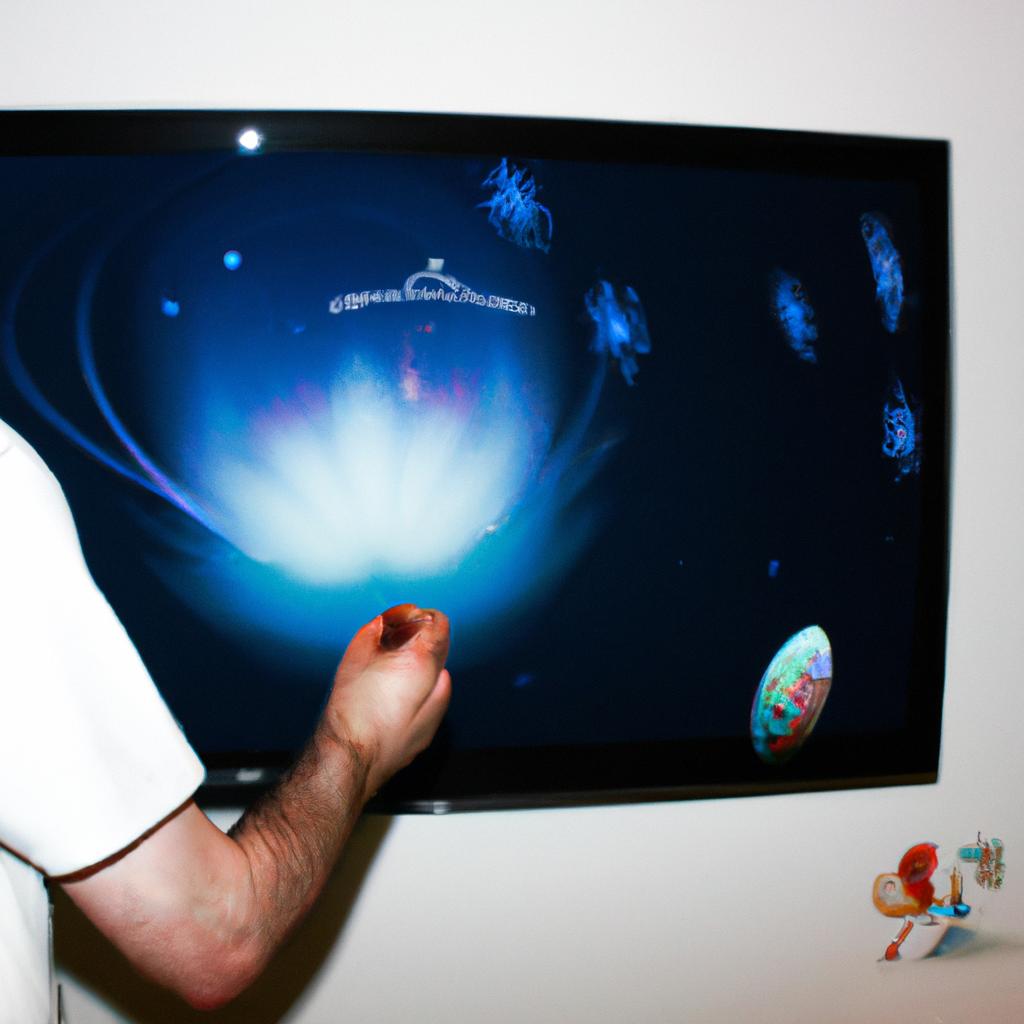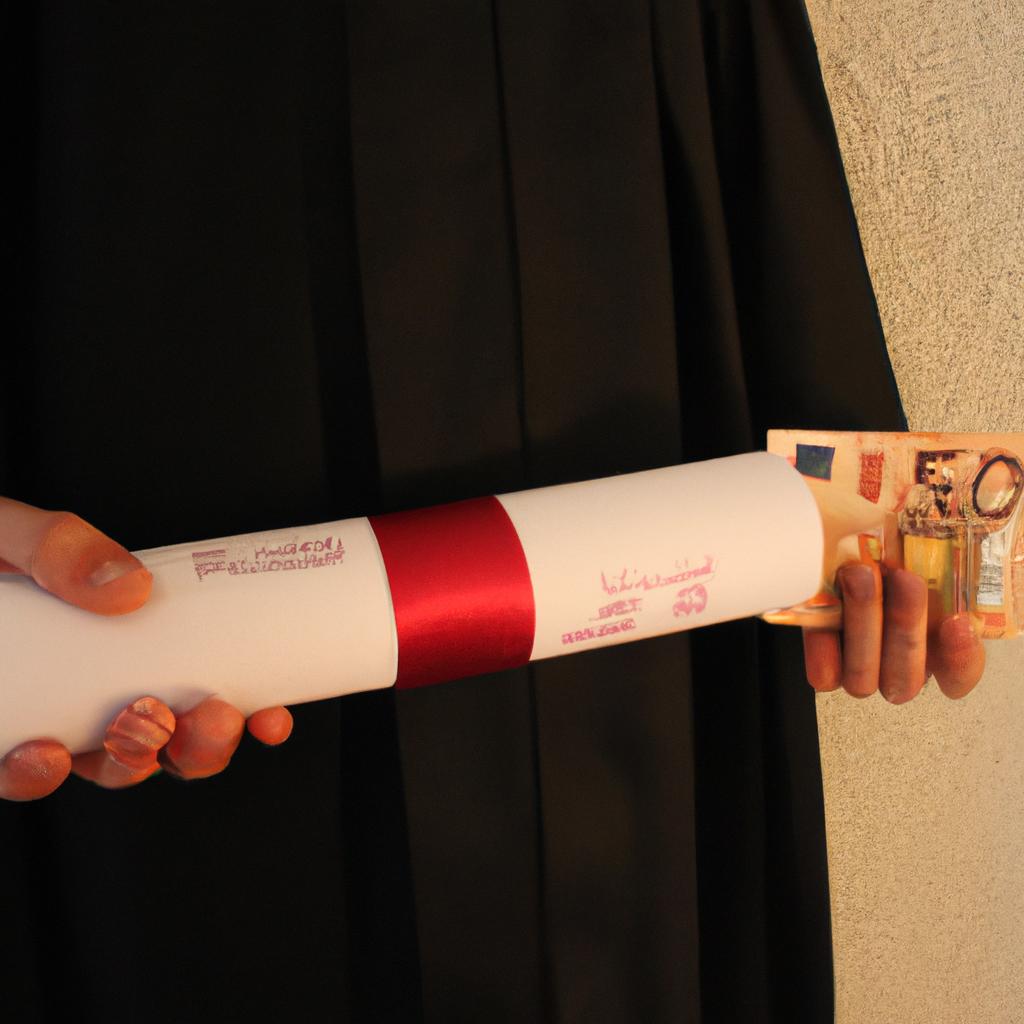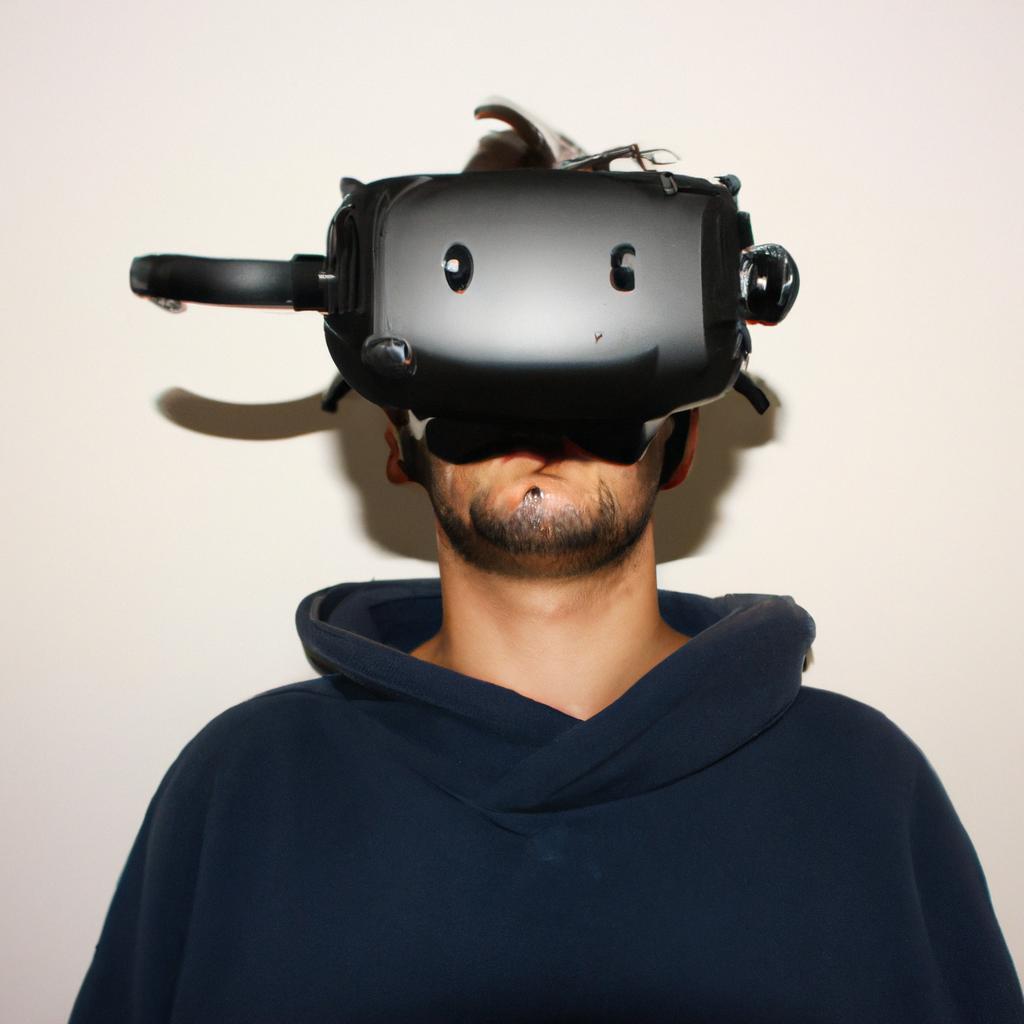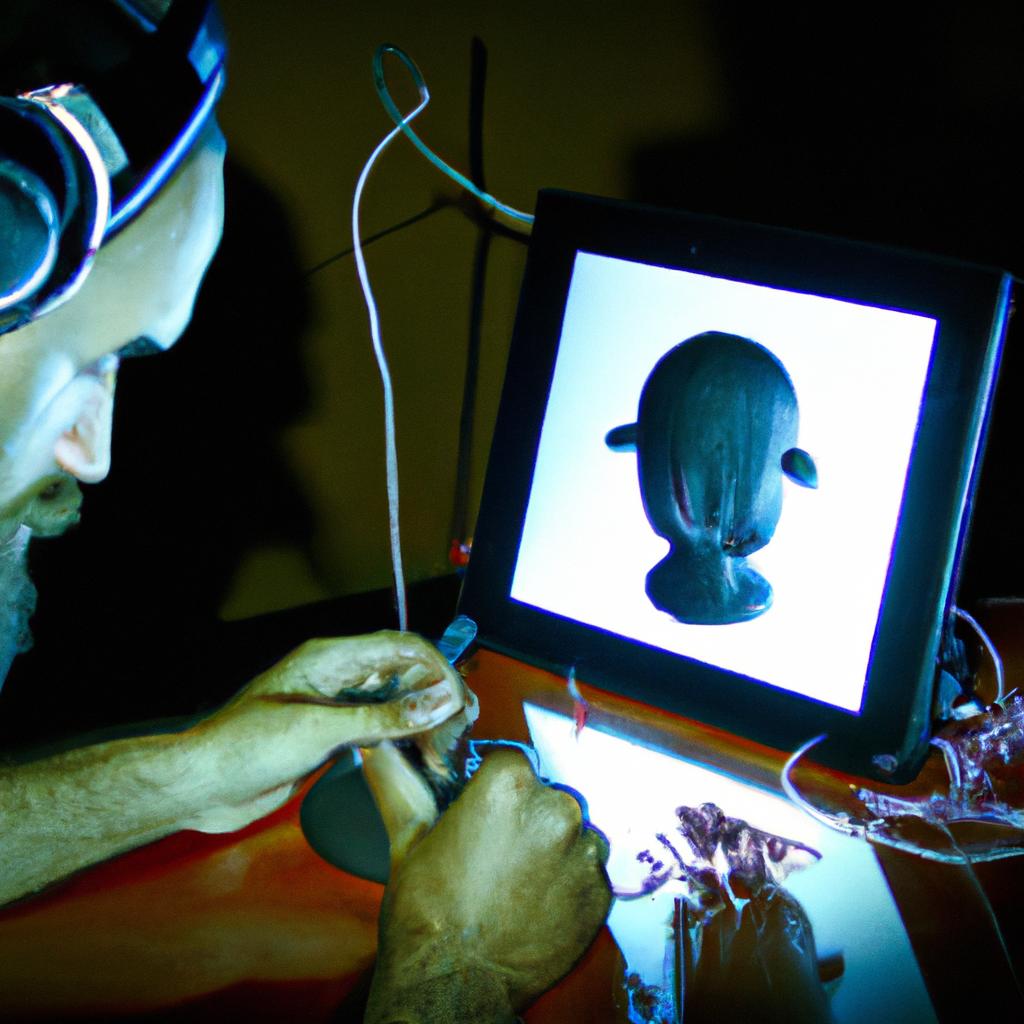Computer graphics has become an integral part of the arts and television industry, revolutionizing the way visual content is created and consumed. Through the magic of digital art, artists and designers are able to bring their imagination to life in ways that were previously unimaginable. One such example is the renowned television series “Game of Thrones,” which extensively utilizes computer-generated imagery (CGI) to create breathtaking landscapes, mythical creatures, and epic battles.
The use of computer graphics in arts and television opens up a world of possibilities for creative expression. Digital tools allow artists to manipulate images, textures, colors, and shapes with precision and ease. This enables them to produce visually stunning artwork that evokes emotions and captivates audiences. In addition, computer graphics provide a cost-effective solution for producing high-quality visuals compared to traditional methods like hand-drawn illustrations or physical props.
Furthermore, computer graphics have transformed the television industry by enhancing storytelling capabilities. Complex narratives can be brought to life through CGI effects that seamlessly integrate real actors with virtual environments or fantastical elements. This integration creates a sense of believability that draws viewers into these fictional worlds. As a result, shows like “Game of Thrones” have gained massive popularity due to their ability to transport audiences into richly detailed and immersive realms filled with dragons, castles, and vast landscapes.
Computer graphics also play a crucial role in enhancing the visual spectacle of television shows. Epic battles and large-scale events can be realistically depicted through CGI, allowing for breathtaking sequences that would otherwise be impossible or too costly to produce. The use of computer-generated effects enhances the overall production value of these shows and creates memorable visual moments that leave a lasting impact on viewers.
In addition to its impact on the arts and television industry, computer graphics have also revolutionized advertising and marketing. Advertisers now have the ability to create eye-catching visuals that grab attention and effectively convey their message. From animated characters to intricate product demonstrations, computer graphics enable advertisers to create compelling campaigns that engage consumers in unique ways.
Overall, computer graphics have transformed the arts and television industry by providing artists and designers with powerful tools for creative expression. Whether it’s bringing mythical creatures to life or creating stunning landscapes, CGI has become an essential part of storytelling in both traditional media and digital platforms. As technology continues to advance, we can expect even more groundbreaking applications of computer graphics in the future.
The Evolution of Computer Graphics in Arts and Television
The Evolution of Computer Graphics in Arts and Television
Over the past few decades, computer graphics have revolutionized the world of arts and television, opening up a whole new realm of possibilities for creating visually stunning imagery. From enhancing traditional art forms to enabling breathtaking visual effects in films and television shows, the evolution of computer graphics has truly been remarkable.
One notable example that demonstrates the impact of computer graphics is the 1995 film “Toy Story.” This animated feature film marked a breakthrough moment in cinema as it was the first fully computer-generated movie. The use of advanced algorithms and sophisticated rendering techniques brought life-like characters and vibrant worlds to the screen, captivating audiences worldwide. It showcased how digital art could transcend traditional boundaries and create an immersive storytelling experience.
To further understand the significance of computer graphics in arts and television, let us explore some key aspects:
-
Unprecedented Realism: With advancements in technology, artists can now create visuals that are indistinguishable from reality. Whether it’s bringing historical figures back to life or constructing fantastical landscapes, computer graphics enable artists to achieve levels of realism previously unattainable.
-
Expanded Creativity: Digital tools offer endless possibilities for artistic expression. Artists can experiment with various styles, colors, textures, and compositions without limitations imposed by physical media. They can manipulate light sources, simulate natural phenomena like water or fire, and seamlessly blend different elements to create unique works of art.
-
Enhanced Visual Effects: In the realm of television and film production, computer graphics play a pivotal role in crafting mesmerizing visual effects. Explosions, alien creatures, time-travel sequences – all these spectacular moments are made possible through intricate CGI work. Such effects not only captivate viewers but also enhance narrative storytelling by immersing them into imagined worlds.
-
Efficiency and Cost-effectiveness: Traditional art creation requires expensive materials and long hours spent on manual processes. On the other hand, computer graphics offer a more efficient and cost-effective alternative. Artists can make changes easily, experiment with different options, and produce high-quality work without the need to invest in physical supplies repeatedly.
| Advantages of Computer Graphics |
|---|
| 1. Realism: Achieve unparalleled levels of realism in visual representation. |
| 2. Creativity: Explore new artistic styles and techniques beyond traditional boundaries. |
| 3. Visual Effects: Create captivating effects that enhance storytelling in films and television shows. |
| 4. Efficiency: Save time and resources by utilizing digital tools for art creation. |
As we have seen, computer graphics have revolutionized arts and television by pushing the boundaries of creativity, providing unprecedented realism, enabling stunning visual effects, and offering efficiency in art production processes. In the subsequent section, we will delve deeper into exploring the role of computer graphics in visual effects, shedding light on how this technology has transformed the world of cinema.
[Transition] Moving forward, let us now explore the fascinating realm of computer graphics within visual effects…
Exploring the Role of Computer Graphics in Visual Effects
Section H2: Exploring the Role of Computer Graphics in Visual Effects
In recent years, computer graphics have revolutionized the world of visual effects, enabling filmmakers and artists to bring their wildest imaginations to life. One such example is the iconic film “Avatar,” directed by James Cameron. Through the masterful use of computer-generated imagery (CGI), this groundbreaking movie transported audiences to a lush alien world called Pandora, captivating them with its stunning visuals and immersive storytelling.
Computer graphics technology has opened up a multitude of possibilities for creating mesmerizing visual effects that enhance our viewing experiences. Let us delve deeper into the role of computer graphics in visual effects:
-
Unleashing Creativity: By harnessing CGI techniques, artists can push the boundaries of their creativity beyond what was previously imaginable. From fantastical creatures like dragons and aliens to breathtaking landscapes and futuristic cityscapes, computer graphics allow artists to materialize their visions on screen.
-
Realism at Its Finest: With sophisticated rendering algorithms and advanced modeling tools, computer graphics enable filmmakers to achieve unparalleled levels of realism in their visual effects. This level of detail ensures that even the most minute aspects, such as light reflections or intricate textures, are faithfully reproduced on screen.
-
Seamless Integration: In order for visual effects to seamlessly blend with live-action footage, meticulous attention must be paid to every element within a scene. Computer graphics provide the flexibility needed to perfectly integrate animated characters or objects into real-world environments without compromising believability.
-
Enhancing Emotional Impact: When used effectively, computer-generated imagery has the power to evoke strong emotional responses from viewers. Whether it’s bringing tears through heart-wrenching performances captured using motion capture technology or instilling awe through larger-than-life action sequences, computer graphics intensify the impact of these moments on an audience.
| Benefits of Computer Graphics in Visual Effects |
|---|
| Unleashing Creativity |
| – Allows artists to materialize their visions on screen. |
| Enhancing Emotional Impact |
As we have seen, computer graphics play a pivotal role in the creation of visually stunning and emotionally impactful scenes in film and television. By pushing the boundaries of creativity, achieving unprecedented realism, seamlessly integrating CGI with live-action footage, and intensifying emotional impact, computer graphics elevate storytelling to new heights.
Transitioning into the subsequent section about “Enhancing Storytelling through Computer-Generated Imagery,” it is essential to explore how this technological marvel has become an indispensable tool for filmmakers seeking to captivate audiences with immersive narratives.
Enhancing Storytelling through Computer-Generated Imagery
As we delve further into the world of computer graphics, it becomes evident that its impact extends far beyond just visual effects. One notable aspect where computer graphics have revolutionized the creative industry is in arts and television. By harnessing the power of digital art, artists and filmmakers can now bring their imaginations to life in ways never before possible.
To illustrate this point, let’s consider a hypothetical scenario where a renowned painter decides to explore the realm of digital art. Previously limited by physical mediums, they now find themselves equipped with an array of tools and techniques offered by computer graphics software. With these new resources at their disposal, our artist is able to create stunningly realistic landscapes filled with vibrant colors and intricate details. The ability to manipulate light sources and textures adds depth and dimensionality to their work, resulting in visually captivating pieces that captivate viewers.
The utilization of computer graphics in arts and television has not only transformed individual artistic practices but also significantly impacted the overall creative landscape. Here are some key aspects highlighting the magic of digital art:
- Unlimited possibilities: Digital art allows for unrestricted creativity, enabling artists to push boundaries and experiment with various styles, concepts, and themes.
- Efficiency: Unlike traditional methods that often require extensive time and resources for corrections or revisions, computer graphics provide a streamlined workflow allowing artists to iterate quickly without compromising quality.
- Collaboration: Through online platforms and shared project files, artists from different locations can collaborate seamlessly on artworks or animated projects.
- Accessibility: Digital art opens doors for aspiring creatives who may not have access to expensive materials or formal training. It democratizes artistic expression by lowering barriers to entry.
Furthermore, the integration of computer-generated imagery (CGI) in television productions has transformed storytelling capabilities. Whether used subtly or overtly, CGI enhances narratives by creating fantastical worlds, mythical creatures, or mind-bending visual effects. This infusion of digital artistry helps to immerse audiences in fictional realms and heighten emotional impact.
In the subsequent section, we will explore how computer graphics have influenced artistic expression across various disciplines. By examining their impact on painting, sculpture, photography, and other traditional forms of art, we can gain a comprehensive understanding of the transformative power of this medium.
The Impact of Computer Graphics on Artistic Expression
Enhancing Storytelling through Computer-Generated Imagery has revolutionized the way stories are brought to life on screen. This section will explore the profound impact that computer graphics have had on artistic expression, unveiling new possibilities for creativity and visual storytelling.
One remarkable example of how computer graphics have transformed artistic expression is seen in the work of renowned digital artist Alex Ross. Through his unique blend of traditional painting techniques and digital tools, Ross creates stunningly realistic portraits of beloved fictional characters from comic books and films. His ability to seamlessly merge the physicality of paint with the limitless potential of digital manipulation allows him to capture intricate details and convey emotions in a way that surpasses what can be achieved solely through traditional methods.
The integration of computer graphics into art and television has opened up a world of possibilities for artists, propelling their creative visions beyond conventional boundaries. Here are some key ways in which computer-generated imagery (CGI) has enhanced artistic expression:
- Expanded Visual Palette: CGI enables artists to experiment with an infinite range of colors, textures, and effects, broadening their options for self-expression.
- Unleashed Imagination: The use of CGI liberates artists from the limitations imposed by reality, allowing them to bring fantastical worlds and creatures to life without practical constraints.
- Dynamic Motion and Fluidity: With CGI, artists can create fluid movements and dynamic action sequences that were previously difficult or impossible to achieve using traditional animation techniques.
- Improved Accessibility: Digital tools make it easier for aspiring artists to enter the field as they provide affordable alternatives to expensive materials, reducing barriers to entry.
| Expanded Visual Palette | Unleashed Imagination | Dynamic Motion and Fluidity | Improved Accessibility | |
|---|---|---|---|---|
| Pros | Offers endless color choices | Enables creation beyond reality’s limits | Allows for seamless movement | Lowers cost barriers |
| Cons | Risk of overuse or reliance | Can lead to detachment from reality | Potential for excessive action without substance | May devalue traditional art |
In conclusion, the integration of computer graphics in arts and television has revolutionized artistic expression by providing new avenues for creativity and visual storytelling. Artists like Alex Ross demonstrate the power of combining digital techniques with traditional skills to create captivating works that captivate audiences. The possibilities offered by CGI have expanded artists’ visual palettes, unleashed their imaginations, and introduced dynamic motion into their creations while also making the field more accessible to aspiring artists.
The next section will delve into the challenges and innovations in computer graphics for television, exploring how advancements in this field continue to shape our viewing experiences on screen.
Challenges and Innovations in Computer Graphics for Television
Transitioning from the impact of computer graphics on artistic expression, we now explore the challenges faced by artists and television producers as they push the boundaries of visual storytelling. One such example is the use of augmented reality (AR) technology in creating immersive art experiences. Imagine walking into a gallery where paintings come to life through your smartphone or tablet, revealing hidden layers of meaning and allowing you to interact with the artwork.
To fully grasp the significance of these innovations, let us examine some key factors driving advancements in computer graphics for arts and television:
- Realism enhancement: With improved rendering techniques, computer-generated imagery can now achieve unprecedented levels of realism. Artists and filmmakers can create visually stunning worlds that were once only limited to their imagination. This enhanced realism not only captivates audiences but also allows creators to convey emotions and narratives more effectively.
- Time-saving tools: The introduction of advanced software has revolutionized the creative process. From 3D modeling programs to motion capture technology, artists are now able to save time while constructing intricate scenes or animating characters. These tools enable them to focus more on refining their vision rather than getting caught up in technical details.
- Collaboration opportunities: Computer graphics have made it easier for artists from different disciplines to collaborate seamlessly. Through online platforms, designers, illustrators, animators, and sound engineers can work together remotely on projects. This collaborative approach fosters innovation and leads to richer multimedia experiences.
- Expanded accessibility: The democratization of computer graphics tools means that aspiring artists no longer require expensive equipment or years of training to bring their ideas to life. Free software options like Blender and GIMP empower individuals worldwide to experiment with digital art forms without financial barriers.
Table: Examples of Innovative Computer Graphics Techniques
| Technique | Description | Application |
|---|---|---|
| Virtual Reality | Immersive simulated environments | Gaming, virtual tours, training simulations |
| Motion Tracking | Capturing movement for animation or VFX | Sports analysis, film production |
| Procedural Modeling | Using algorithms to generate content | Landscape generation, architectural design |
| Deep Learning | Training neural networks for visual tasks | Image recognition, character animation |
In conclusion, computer graphics have opened up new avenues of artistic expression and storytelling in both the arts and television industries. Through innovations such as augmented reality, enhanced realism, time-saving tools, collaboration opportunities, and expanded accessibility, creators can push boundaries and captivate audiences like never before.
Looking towards the future trends in computer graphics for arts and television, we will explore how emerging technologies are set to further revolutionize these fields. From advancements in machine learning to the integration of virtual reality into mainstream entertainment, the possibilities are vast. Let us now delve deeper into what lies ahead in this ever-evolving realm of digital artistry and visual communication.
Future Trends in Computer Graphics for Arts and Television
Building upon the challenges and innovations discussed earlier, advancements in computer graphics have revolutionized the world of arts and television. With digital art becoming increasingly prevalent in various mediums, such as animation, visual effects, and virtual reality experiences, artists and content creators are now able to push the boundaries of creativity like never before.
Paragraph 1:
One prominent example of how computer graphics have transformed the arts is seen in the case study of an independent filmmaker who utilized advanced CGI techniques to bring their vision to life. By harnessing cutting-edge software and hardware tools, this filmmaker was able to seamlessly blend live-action footage with stunningly realistic digital elements. The result was a visually captivating film that captured the imagination of audiences worldwide.
Paragraph 2:
To further understand the impact of advancements in computer graphics on both arts and television, let’s explore some key factors driving this transformation:
- Enhanced realism: Through sophisticated rendering algorithms and improved texture mapping capabilities, computer graphics can now produce lifelike visuals that blur the line between fantasy and reality.
- Expanded creative possibilities: Artists can manipulate shapes, colors, lighting, and other visual elements effortlessly using intuitive digital tools. This allows for limitless experimentation and exploration within their artistic endeavors.
- Increased efficiency: Digital workflows enable faster iteration cycles, allowing artists to iterate on their ideas more quickly than ever before. This efficiency not only saves time but also encourages innovation by encouraging rapid prototyping.
- Seamless integration: With advances in technology, computer-generated imagery (CGI) can now seamlessly integrate into live-action footage or real-world environments. This integration enhances storytelling potential while preserving a sense of believability.
The remarkable evolution of computer graphics has brought about a myriad of emotions among artists, filmmakers, and audiences alike:
- Awe-inspiring visuals that transport viewers to new worlds
- Excitement at the endless creative possibilities unlocked by digital art
- Amazement at the level of detail and realism achieved through advanced rendering techniques
- Appreciation for the craftsmanship and technical expertise involved in producing visually stunning works
Emotional table:
| Emotion | Description | Examples |
|---|---|---|
| Wonder | A sense of amazement and curiosity sparked by breathtaking visuals | Exploring virtual landscapes |
| Inspiration | Motivation to create or innovate based on captivating imagery | Artists inspired by digitally enhanced paintings |
| Fascination | Intrigued by the intricacies of computer graphics | Analyzing complex visual effects sequences |
| Joy | Delight experienced when encountering visually striking artwork | Admiring a beautifully animated film |
Paragraph 3:
As we continue to witness advancements in computer graphics, it is evident that this technology will shape the future of arts and television. The convergence of artificial intelligence, real-time rendering, and immersive experiences holds tremendous potential for creating even more mesmerizing content. With each new breakthrough, artists are empowered to push their boundaries further, transporting audiences into worlds previously unimagined.
By embracing these technological advancements responsibly and ethically, we can ensure that computer graphics continue to enhance storytelling while preserving the magic that has captivated us throughout history.



